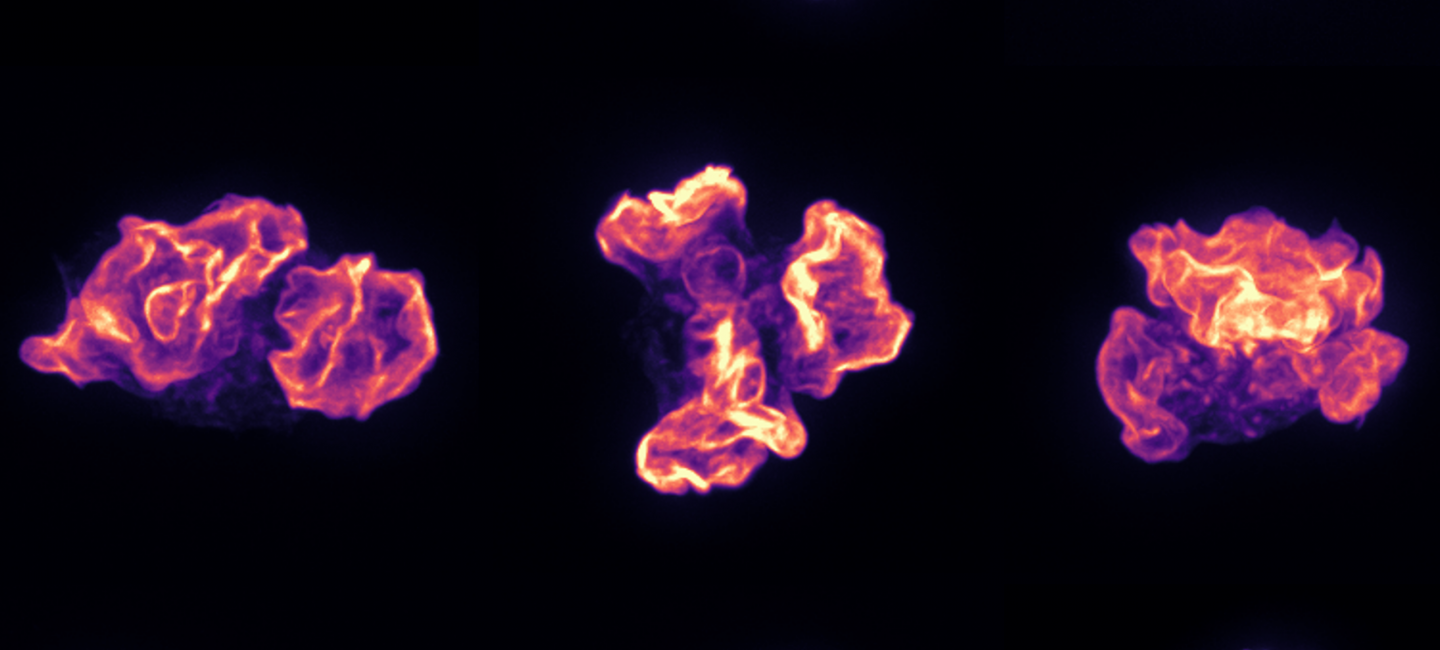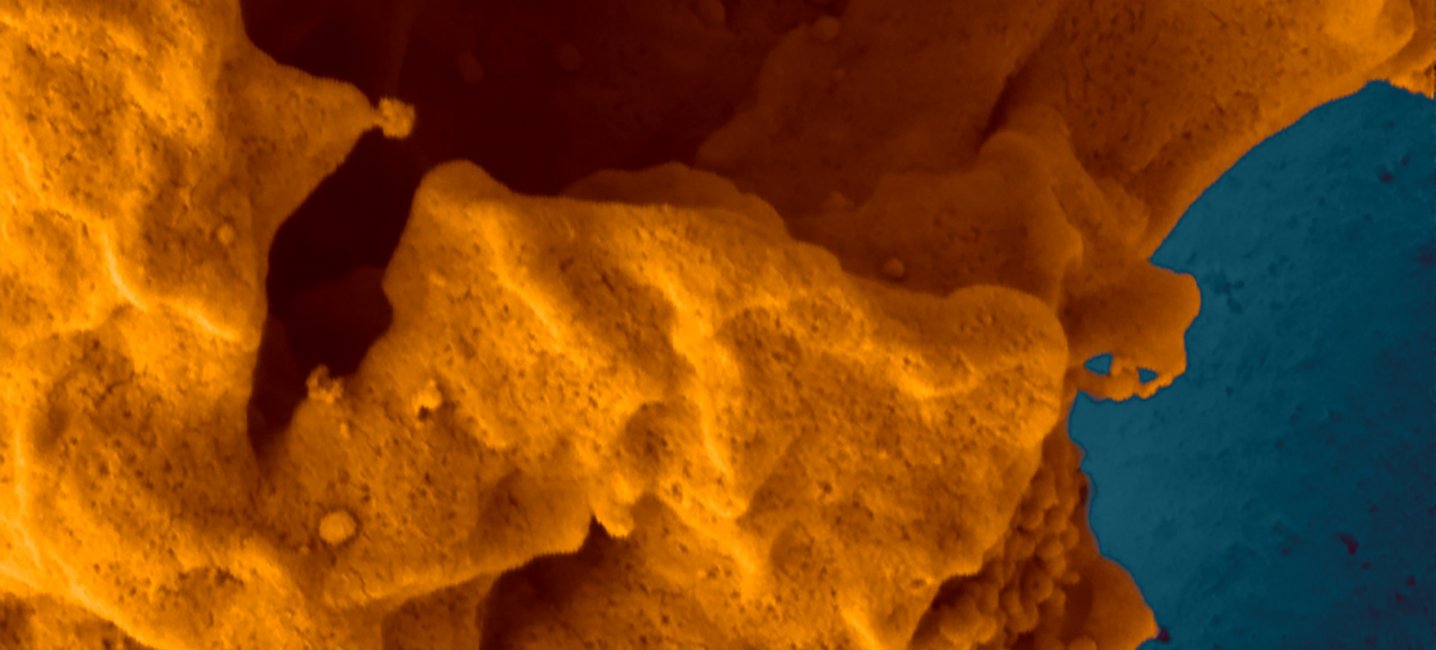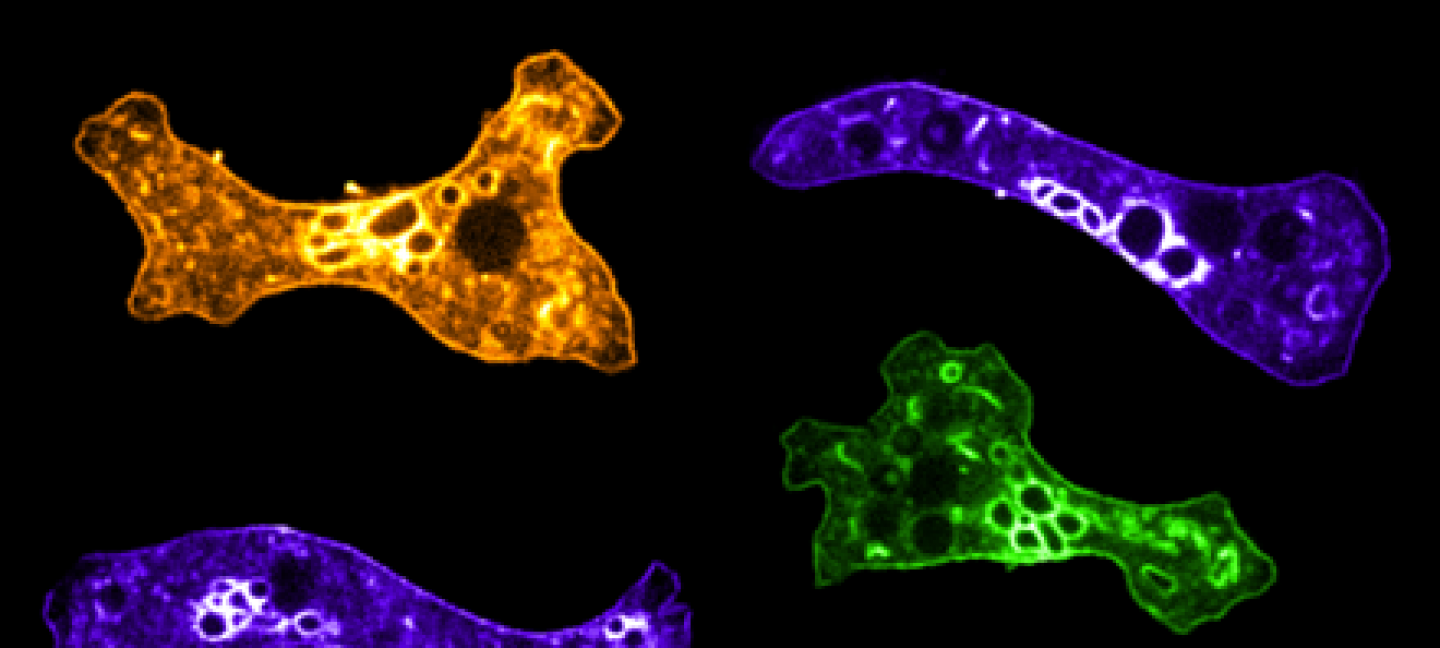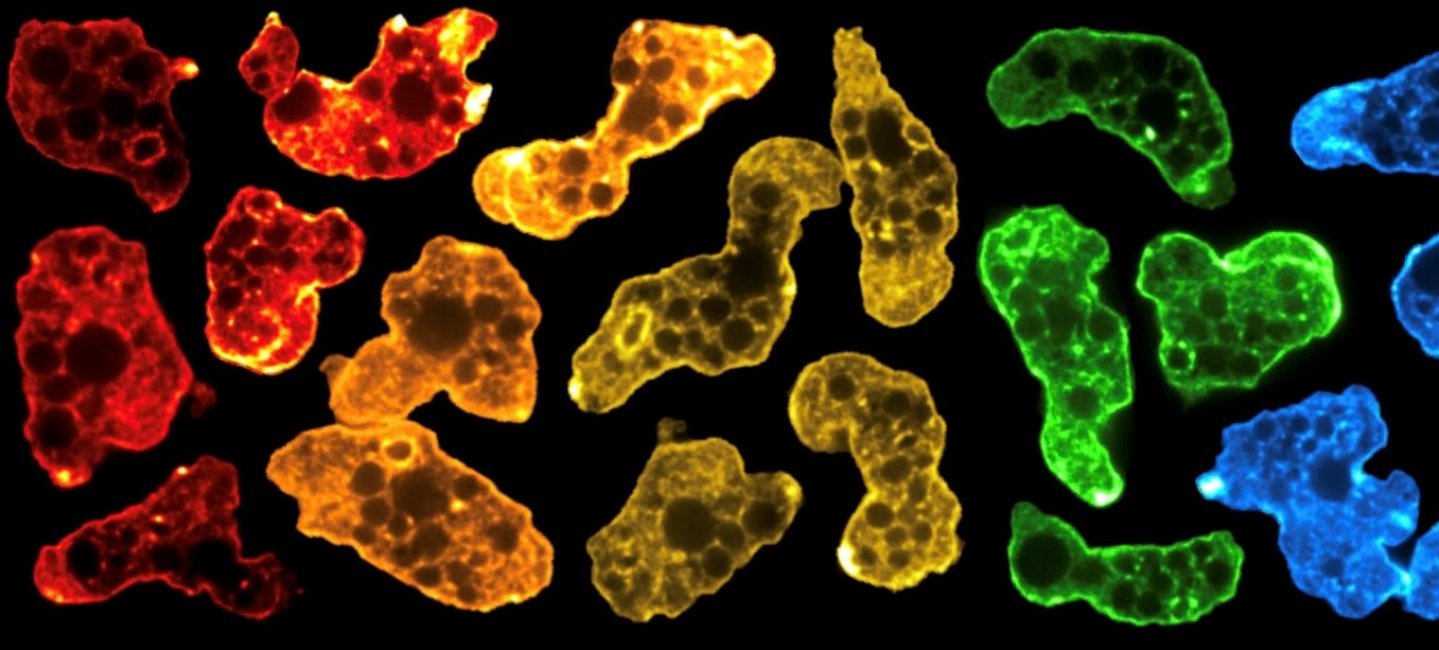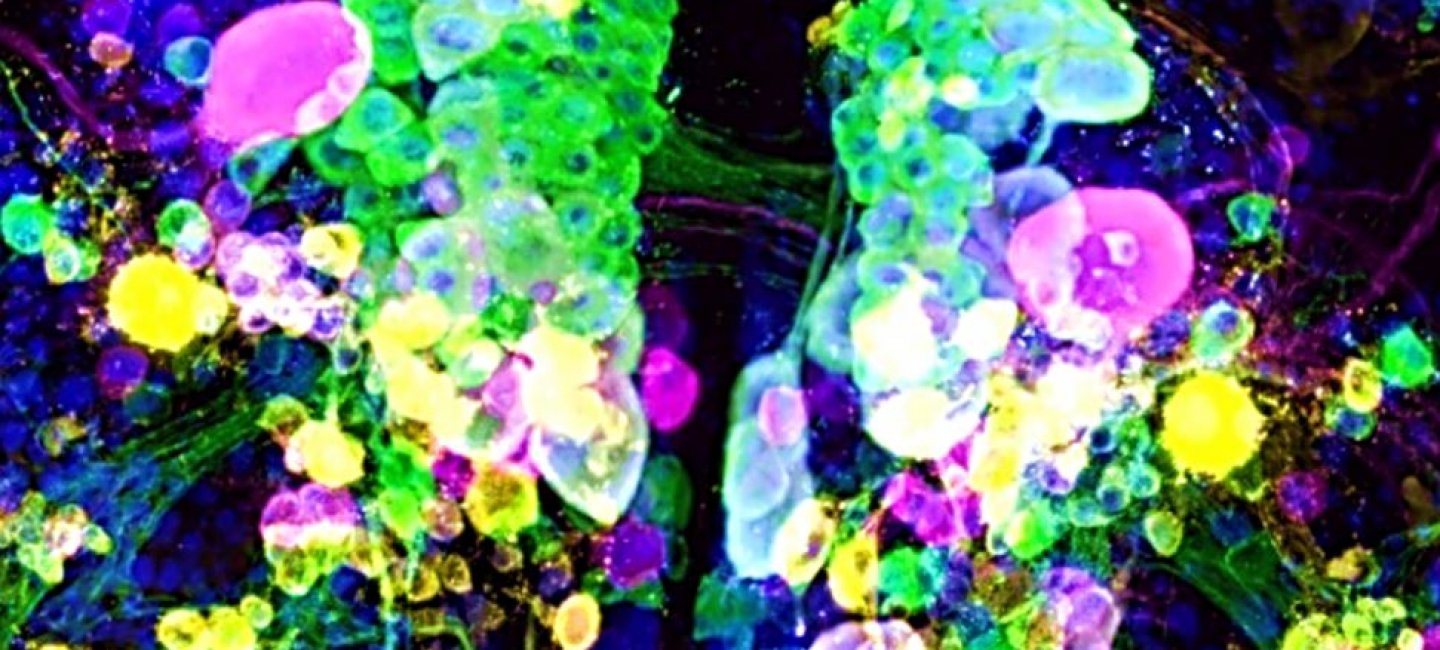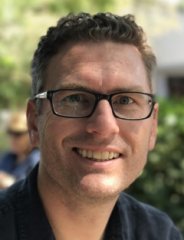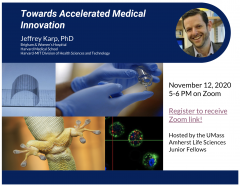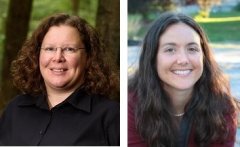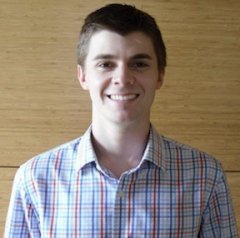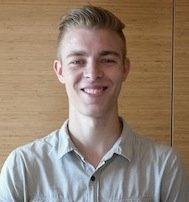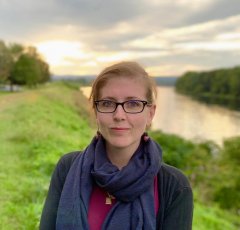News & Announcements
How Cell Processes Round Up and Dump Damaged Proteins
How Cell Processes Round Up and Dump Damaged Proteins
In a new paper with results that senior author Eric Strieter at the University of Massachusetts Amherst calls “incredibly surprising,” he and his chemistry lab group report that they have discovered how an enzyme known as UCH37 regulates a cell’s waste management system.
Strieter says, “It took us eight years to figure it out, and I’m very proud of this work. We had to develop a lot of new methods and tools to understand what this enzyme is doing.”
As he explains, a very large protease called a proteasome is responsible for degrading the vast majority of proteins in a cell; it may be made up of as many as 40 proteins. It has been known for more than 20 years that UCH37 is one of the regulatory enzymes that associates with the proteasome, he adds, “but no one understood what it was doing.”
Writing this week in Molecular Cell, he and first author and Ph.D. candidate Kirandeep Deol, who led and conducted the experiments, with co-authors Sean Crowe, Jiale Du, Heather Bisbee and Robert Guenette, discuss how they answered the question. The work was supported by the NIH’s National Institute of General Medical Sciences. Read more
UMass Amherst Life Sciences Junior Fellows Seminar with Dr. Jeffrey Karp
UMass Amherst Life Sciences Junior Fellows Seminar with Dr. Jeffrey Karp
The Junior Fellows program has invited Dr. Jeffrey Karp to give a talk on Thursday, November 12, 2020.
Title: Towards Accelerated Medical Innovation.
Time: 5-6PM
To register to attend, please click HERE
Shelly Peyton and Michelle Farkas Awarded 2020-21 ADVANCE Collaborative Research Seed Grant
Shelly Peyton and Michelle Farkas Awarded 2020-21 ADVANCE Collaborative Research Seed Grant
The ADVANCE program has announced that three research teams are recipients of ADVANCE Collaborative Research Seed Grants for 2020-21. These competitive grants aim to foster the development of innovative and equitable collaborative research projects among faculty. Recognizing longstanding gender gaps in the academy, the National Science Foundation (NSF) funds universities to build institutional transformation programs in order to advance gender equity for faculty in science and engineering. Through the power of collaboration, ADVANCE cultivates faculty equity and inclusion—especially for women and minorities in science and engineering. Three winning teams demonstrated innovative research and well thought-out and equitable collaborations.
The team with Michelle Farkas and Shelly Peyton will be “Lighting Up Macrophages in Three-Dimensional Tissues.”
Macrophages are unique cells that can both activate and suppress the immune system, by rapidly switching between states often referred to as “M1” (stimulating) and “M2” (suppressing). The balance between these states can be disrupted in cancer and other diseases, which can be disastrous for patients, but also present targets for treatment. There is a critical need for tools to study this interconversion, information vital to being able to stop or reverse immunosuppression. Farkas will develop real-time fluorescent reporters of macrophages to track their changes. Peyton will use the reporters in three-dimensional tissue culture models that mimic the tumor microenvironment to visualize and quantify macrophage-tumor interactions. This work represents the first use of macrophage-based reporters, and the first instance of real-time tracking of macrophage states in a multi-component system. While fluorescent reporters themselves are not a new approach, their application in this manner is vastly different from those of others. By being able to directly visualize the interconversion of macrophages between M1 and M2 phenotypes, the team can for the first time study this process and the conditions under which it occurs, in a spatially and temporally resolved manner, leading to new treatment strategies. Read more
UMass Amherst Research Compares Sensitivity of All Genes to Chemical Exposure
UMass Amherst Research Compares Sensitivity of All Genes to Chemical Exposure
Alexander Suvorov, associate professor in the School of Public Health and Health Sciences, has used an unprecedented objective approach to identify which molecular mechanisms in mammals are the most sensitive to chemical exposures.
The study, published in the journal Chemosphere, advances the understanding of the interaction of chemicals, both pollutants and pharmaceuticals, on gene expression and the impact on human health.
The study identified genes and molecular pathways most sensitive to chemical exposures, including mechanisms involving aging, lipid metabolism and autoimmune disease. “These findings for the first time prove that current epidemics in metabolic and autoimmune disorders may be partly due to a very broad range of chemical exposures,” Suvorov says. Read more
Jake Schnabl PhD Dissertation Defense
Jake Schnabl PhD Dissertation Defense
Tuesday, October 27, 2020
1:00 PM
Zoom link: Please contact mcb@mcb.umass.edu to be included on the email list for this announcement
Dissertation Title: "It takes a village to build a brain: Defining the heterogeneous glial and neural crest contributions to zebrafish forebrain development and neurogenesis"
Advisor: Michael Barresi
Ben Adams PhD Dissertation Defense
Ben Adams PhD Dissertation Defense
Thursday, November 5, 2020
3:00 PM
Zoom link: Please contact mcb@mcb.umass.edu to be included on the email list for this announcement
Dissertation Title: “Substrate selection in endoplasmic reticulum protein quality control”
Advisor: Daniel Hebert
Tracking Shape Changes in Amazon Fish After Major River is Dammed
Tracking Shape Changes in Amazon Fish After Major River is Dammed
A team of biologists led by Craig Albertson and Ph.D. student Chaise Gilbert at the University of Massachusetts Amherst report this week on their comparison between museum collections of cichlid fishes collected before a dam was closed in 1984 on the Tocantins River in the Amazon and contemporary specimens taken from the Tucuruí Reservoir by fishermen 34 years later.
Working with others in Brazil, Albertson’s team tested the idea that these fish could be expected to show changes in body shape as a consequence to shifts in habitat and foraging behavior after the dam rapidly changed environmental conditions from a clear, flowing river to a deep, murky reservoir.
“The once-historic rapids and streams that characterized the system have disappeared from the surrounding area, which in turn has affected the abundance and variety of food sources available to native fishes,” they write in Evolutionary Application this week. Read more
Research Identifies Sperm Biomarker Associated with Couples’ Pregnancy Probability
Research Identifies Sperm Biomarker Associated with Couples’ Pregnancy Probability
Researchers at the University of Massachusetts Amherst have identified a single-measure biomarker in sperm mitochondrial DNA that may predict male reproductive health and pregnancy success. The discovery applies not just to couples seeking care for infertility but also for the general population. This biomarker could become a more accurate predictor of male infertility than semen parameters, on which health care organizations and clinicians have long relied.
“Clinically, the diagnosis of male infertility really hasn’t changed in decades,” says UMass Amherst environmental epigeneticist Richard Pilsner, corresponding author of the study published today, Oct. 6, in the journal Human Reproduction. “In the last 10 to 20 years, there have been major advances in the understanding of the molecular and cellular functions of sperm, but the clinical diagnosis hasn’t changed or caught up.”
In addition to Pilsner, the team of UMass researchers included lead author Allyson Rosati, who wrote the paper as part of her undergraduate honors thesis and recently completed a master’s in molecular and cellular biology; and Brian Whitcomb, associate professor of epidemiology in the School of Public Health and Health Sciences. Read more
Li-Jun Ma Receives Joint Genome Institute Award for Fungi Research
Li-Jun Ma Receives Joint Genome Institute Award for Fungi Research
Professor Li-Jun Ma, biochemistry and molecular biology, has received support from the U.S. Department of Energy’s Joint Genome Institute (JGI) Community Science Program (CSP) to conduct in-depth research on a group of soil fungi, Fusaria, that are economically important because they devastate crops – not only food but biofuel feedstocks. This is a collaborative project between principal investigator Ma and co-principal investigator Robert Proctor, a research microbiologist at the USDA Agricultural Research Service’s National Center for Agricultural Utilization.
Ma says that two of the top 10 plant pathogens are in the Fusarium family, based on a ranking by many molecular plant pathologists. For these new investigations, she will collaborate with Igor Grigoriev and his team at the Joint Genome Institute and Lawrence Berkeley National Laboratory. Other collaborators include evolutionary biologist David Geiser, director of the Fusarium Research Center at Penn State University; Kerry O’Donnell, an expert on taxonomy and biological diversity of Fusarium; and Daren Brown, who has more than 20 years of experience in Fusarium research. Read more
Microbiologist Mandy Muller Receives NIH Grant to Advance Anti-viral Strategies
Microbiologist Mandy Muller Receives NIH Grant to Advance Anti-viral Strategies
Virologist Mandy Muller, microbiology, recently received a five-year, $1.9 million Maximizing Investigators’ Research Award (MIRA) grant from the NIH’s National Institute for General Medical Sciences to continue her advanced studies into how certain viruses, such as those in the Herpes family and those that cause Kaposi’s sarcoma in immune-compromised individuals, evade the body’s immune response by hiding, undetectable, deep in tissues for decades.
Muller’s lab is trying to detect these viruses earlier than ever before, as soon as the onset of infection, before they can hijack immune pathways and before they can hide. She has been working on the same Kaposi's Sarcoma Associated Herpes virus that she started studying as an undergraduate in her native France – and there is still much to learn, she says. Read more

